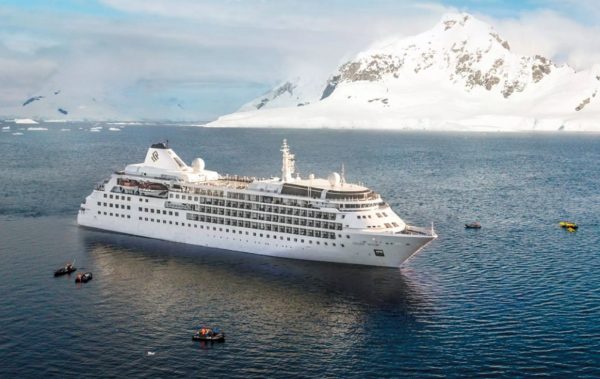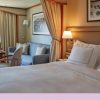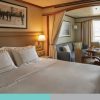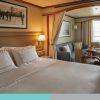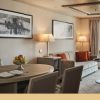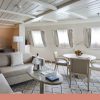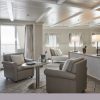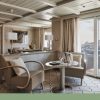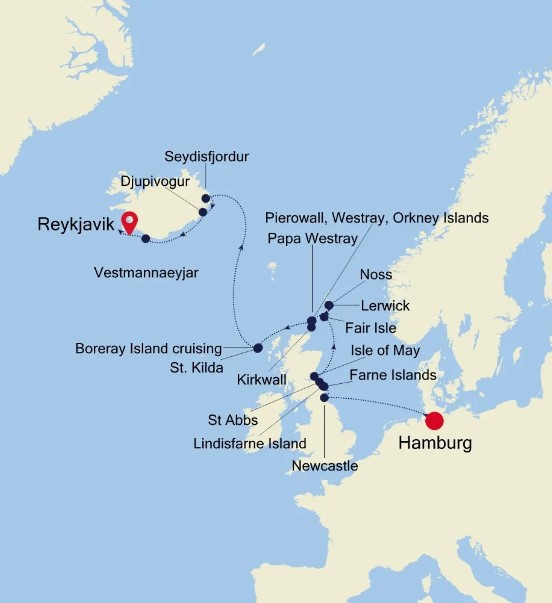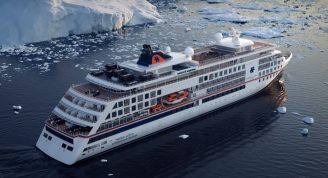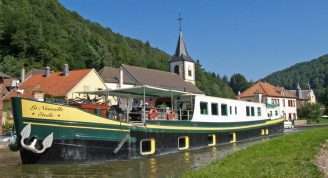Description
Bathed in centuries of history and the never setting sun, this voyage offers seldom visited ports their time to shine. Enjoy the Victorian backdrop of Newcastle before sailing north to the holiest site in Anglo-Saxon England, Lindisfarne. Next, string Scotland’s island jewels together – St. Abbs, Isle of May, Fair Isle, the Shetlands, the Orkneys. Get your cameras ready for St. Kilda – home to around 1 million Puffins! Finally, sail your way to Reykjavik via the titanic scenery of Iceland’s south east coast.
Trip Name
Hamburg to Reykjavik
Days
17
Overview
Vessel Type: Small Luxury Cruise Ship
Length: 156.7 metres
Passenger Capacity: 274
Built: 1995 / Refurbished: 2021
A major upgrade in December 2018 saw Silver Wind looking better than ever. A second refurbishment in summer 2021 will see her benefitting from a strengthened to ice-class hull and will make her one of the most adaptable ships in our fleet. Still timelessly elegant, still luxuriously relaxed, her improved cruising versatility means she is able to whizz from the Polar Regions at the ends of the earth to the iconic ports of the Mediterranean with fluid ease. So whether you want to get up close and personal to penguins in Antarctica or laze on the golden sands of the Caribbean, get ready for a wealth of diverse destination experiences, in traditional Silversea comfort.
Dining
The Grill. Soft breezes and ocean views beckon at the Grill, especially as the sun goes down when cruise guests gather for cocktails at the outdoor bar and talk about the day’s events.
La Terrazza. Authentic Italian recipes and the freshest, sustainable ingredients come together in this restaurant at sea.
The Restaurant. Enjoy Continental and regional specialities, as well as sweeping ocean views in our main dining room.
La Dame. La Dame features a menu of seasonally inspired dishes prepared with the freshest locally sourced ingredients.
Public Areas
Pool Deck. Chaise lounges arranged in the sun or shade. Bubbling whirlpools. The pool water refreshing in warmer climates, heated for cooler weather.
Reception. Be sure to visit the Reception area, where our experts can provide invaluable information to help you get the most out of your cruise.
Fitness Centre. The Fitness Centre offers world-class equipment, classes, and personalized services.
Connoisseur’s Corner. If you appreciate good cognac or premium cigars, be sure to visit the Connoisseur’s Corner to see the ship’s exceptional selection.
Boutique. There is a wealth of luxury shopping experiences aboard all Silversea ships, featuring the most distinctive and appealing brands from across the globe.
The Show Lounge. Applaud a broad spectrum of entertainment — from full-scale production shows and classical soloists, to cultural entertainment and feature films.
Panorama Lounge. Relax and unwind in the Panorama Lounge, a sophisticated yet amicable space offering beautiful ocean views as you enjoy your cruise.
Zagara Beauty Spa. Come and indulge in a luxurious spa treatment. Facials, body wraps, massages: the spa is the perfect place to unwind.
Dolce Vita. Dolce Vita is the gathering place for our savvy travellers of the world, a place where guests mingle and exchange stories and where new faces become lifelong friends.
Zagara Beauty Salon. Maintain your fresh look throughout your luxury cruise at the Zagara Beauty Salon. Services are available for men and women.
Observation Library. The Observation Library boasts exceptional views overlooking the ocean as it stretches out below you while you enjoy your cruise.
Photo Studio. The Photo Studio offers a professional space for budding photographers to retouch, print and display their work.


